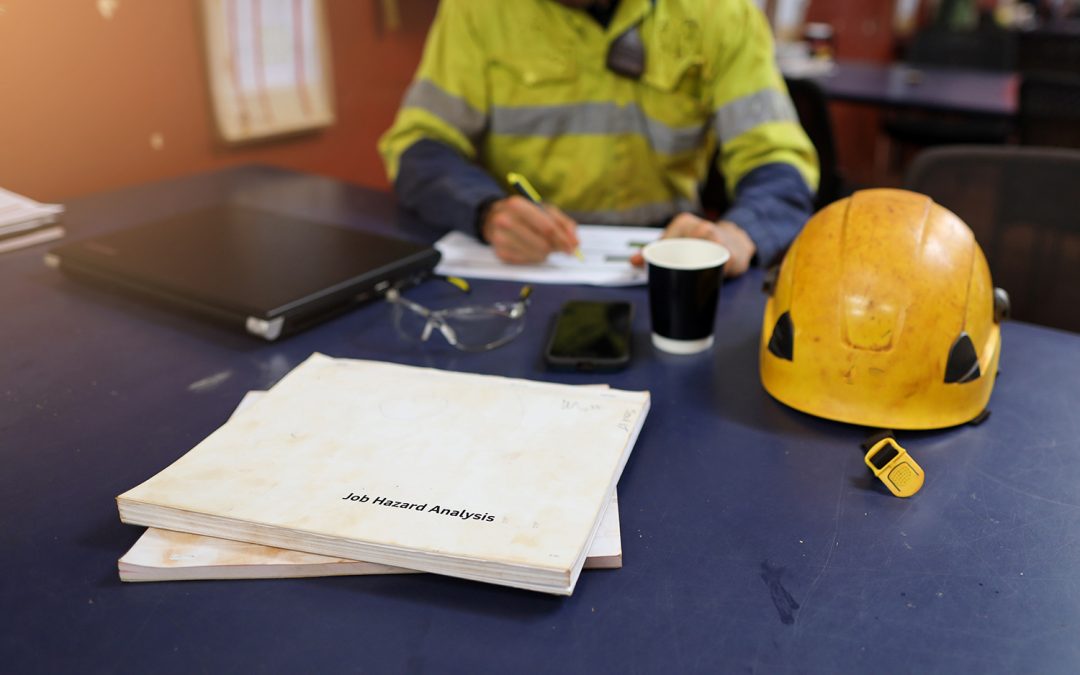Safety professionals tend to agree that being proactive rather than reactive to the health and safety of employees is the best policy. Waiting for an inspection by the Occupational Safety and Health Administration (OSHA) is not typically the best way to assess your health and safety program.
Employers who are covered under the OSH Act must provide a workplace free of hazards and that includes infectious diseases as the COVID-19 pandemic has proven. To provide guidance to employers, OSHA publishes standards and methods that employers can use to control these types of hazards.
During the COVID-19 pandemic, employers have had to stay abreast of not only OSHA’s emergency temporary standards but also guidance from The Centers for Disease Control and Prevention (CDC) and local public health agencies. It’s been quite a challenge.
What should your company be doing to proactively make sure you are following the guidelines, keeping your workers safe (good for employee hiring, engagement, and retention too) so an OSHA safety inspection doesn’t cost you thousands of dollars?
To be proactive, an employer needs to address how to
- Assess hazards,
- Eliminate or minimize hazards,
- Confirm controls are effective, and
- Better understand what can result when OSHA gets involved.
Let’s look at these four areas.
1. Conduct a Hazard Assessment
To begin preparing a health and safety program, an employer must conduct a hazard assessment. The individual or individuals who perform that assessment must be knowledgeable of the tasks that are performed in the facility. All the functions and tasks in the facility must be assessed in order to identify the hazards and then implement controls to eliminate or minimize the hazards.
The hazards to assess include but may not be limited to:
- Chemical hazards – review the SDS (Safety Data Sheets) and product labels for each product used in the facility to identify where there could be exposure of concern.
- Physical hazards – identify exposures to excessive noise, elevated heat, or sources of radiation.
- Biological hazards – are workers exposed to sources of infectious diseases, molds, etc.
- Ergonomic factors – examine work activities that require heavy lifting, work above shoulder height, repetitive motions, or tasks with significant vibration.
2. Eliminate or Minimize Hazards
Next, develop a plan to eliminate or minimize the hazard. OSHA provides a hierarchy of controls that emphasizes engineering solutions first, followed by safe work practices, administrative controls, and finally personal protective equipment.
Through Engineering Controls, a hazard can be controlled at its source. These controls can be accomplished through the design of the facility, equipment, or a process that will remove the hazard or provide a substitute that is not hazardous. This type of control could include enclosing the hazard such as with a sandblasting cabinet that has suction. If enclosing the hazard is not feasible, then barriers or local ventilation can be installed to reduce the exposure. Barriers and physical distancing have been used by many employers for the protection of their workers during the COVID-19 pandemic.
If engineering controls do not eliminate or minimize the hazard, then Administrative Controls can be considered. These controls are aimed at reducing employee exposure to hazards by changing the way that people work. Due to COVID-19, some companies where workers must work closely together have had to reduce the number of workers who are at the workplace at the same time, adding shifts so fewer workers are at the facility at the same time.
Personal Protective Equipment (PPE) is the last resort to consider as a supplementary method of control. Face masks have become a way of life so to speak but have been effective in preventing exposure in the workplace. Some employers have required respirators in some instances to provide the best protection to their workers. This has required compliance with OSHA’s Respiratory Protection Standard which requires fit testing and medical questionnaires. The Respiratory Protection Standard has been one of the most cited standards over the past couple of years.
3. Confirm Controls are Effective
A critical part of establishing the controls described above is training workers on how to use the controls and also tracking, inspecting, and evaluating the controls once they are in place. Workers should be involved in the evaluation of these controls. This follow-up could include:
- Conducting regular inspections to confirm that the controls are being used correctly and consistently,
- Evaluating the control measures to determine if any modifications or additional training are necessary, and
- Creating preventive maintenance schedules and ensuring that workers are performing the preventive maintenance as scheduled to keep the equipment operating safely.
4. OSHA Inspections and Penalties
When work-related injuries and illnesses do happen, an employer may have to take steps to notify OSHA. Under the Federal OSHA plan, employers must report a work-related fatality to OSHA within 8 hours and in most cases, OSHA will follow up. If there is a work-related amputation, loss of an eye, or hospitalization of a worker, then the employer reports those injuries to OSHA within 24 hours. Some state plans have more stringent requirements for this reporting.
OSHA does conduct random inspections; however, the majority of inspections are generated by employee complaints. An employee complaint may or may not result in OSHA performing an onsite inspection. In many cases, a letter or email is sent to the employer and the employer is provided a certain length of time to respond to OSHA stating what they have done to abate the issue or that the issue was not legitimate.
If OSHA cites an employer and penalties are imposed on the employer, then the violation will be shown as Serious, Other-than-Serious, Willful, or Repeated. The following is OSHA’s explanation of these types of violations:
- WILLFUL: A willful violation is defined as a violation in which the employer either knowingly failed to comply with a legal requirement (purposeful disregard) or acted with plain indifference to employee safety.
- SERIOUS: A serious violation exists when the workplace hazard could cause an accident or illness that would most likely result in death or serious physical harm unless the employer did not know or could not have known of the violation.
- REPEATED: A Federal agency may be cited for a repeated violation if the agency has been cited previously for the same or a substantially similar condition and, for a serious violation, OSHA’s regionwide inspection history for the agency lists a previous OSHA Notice issued within the past five years; or, for an other-than-serious violation, the establishment being inspected received a previous OSHA Notice issued within the past five years.
- OTHER-THAN-SERIOUS: A violation that has a direct relationship to job safety and health, but is not serious in nature, is classified as “other-than-serious.”
If OSHA is not satisfied with the response from the employer, then it can result in an on-site inspection and penalties. Each year OSHA increases the penalties. Here are the penalties that were effective on January 1, 2022:
| Type of Violation | $ Penalty |
| Serious (Other-Than-Serious Posting Requirements) | $14,502 per violation |
| Failure to Abate | $14,502 per day beyond the abatement date |
| Willful or Repeated | $145,027 per violation |
OSHA can apply penalty factors. They are based on these four factors:
- The gravity of the violation,
- The size of the employer’s business,
- The good faith efforts of the employer; and
- The employer’s history of previous violations.
OSHA can also apply Penalty Adjustment Factors. According to OSHA, these adjustments will vary depending on the employer’s “size” which is based on the maximum number of employees, “good faith,” and “history of previous violations.” The adjustments can be:
- 10 percent reduction for history,
- 25 percent reduction for good faith efforts, and
- 70 percent reduction for size.
There are also limitations to penalty reduction factors. They are:
- Penalties proposed for violations classified as repeated shall be reduced only for size.
- Penalties proposed for violations classified as willful shall be reduced only for size and history.
- Penalties proposed for serious violations classified as high severity/greater probability shall be reduced only for size and history.
In summary, assessing the hazards in your workplace and taking the steps to develop controls that will protect your workers will also protect the liability of your company.
Work-related injuries and illnesses can cause not only substantial financial burdens on a business but also can jeopardize your business’ ability to produce products and/or provide the services to meet your customers’ expectations. Of course, it doesn’t end there. Continuously monitoring and evaluating your controls is critical to providing a safe workplace.

SafeLink Consulting Inc.
770-205-6745 Office

